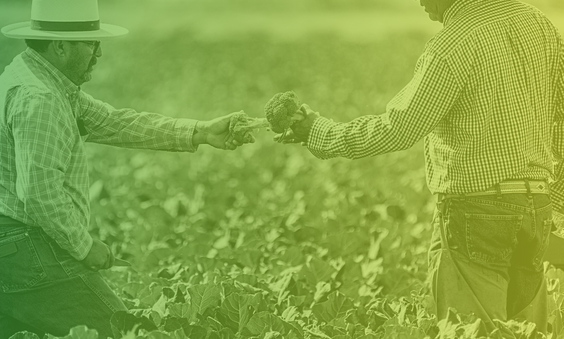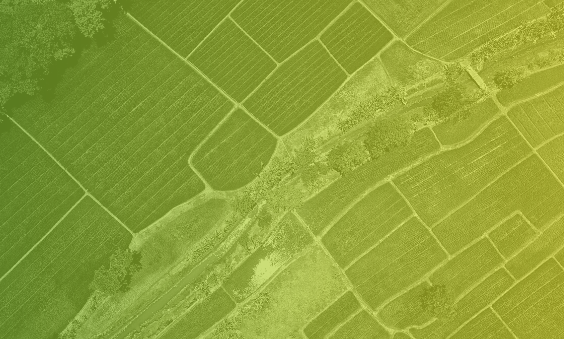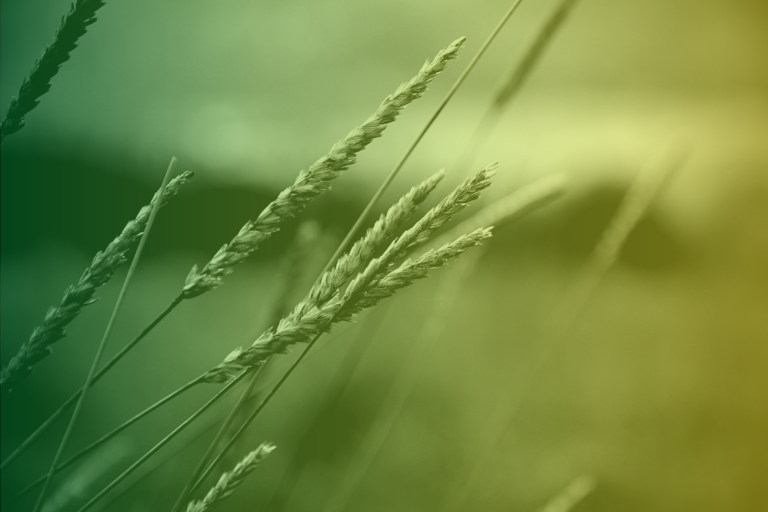Interview: Mad Ag on Supporting Farmers to Build a More Regenerative Food Future
Mad Agriculture is a non-profit that helps farmers to transition from conventional to regenerative organic agriculture by providing agronomic know-how, operating capital, and market access. Their mission is to catalyze a revolution in agriculture at the global scale founded on the virtues of a good and true economy that seeks to achieve harmony between human and ecological well-being – starting from the soil up. Mad Ag has been an incredible partner in PBFI’s Domestic Sourcing Initiative work, helping to provide guidance and support for farmers who are looking to lead with regenerative farming practices. Mad Ag’s Director of Strategic Partnerships Elizabeth Candelario recently sat down with the PBFI team to share more about the organization and how they are working to advance food systems change in favor of regenerative agriculture.
Let’s start with the big picture overview, what is Mad Agriculture and can you tell the story of the name?
Mad Agriculture helps farmers thrive in regenerative organic agriculture. We like to say that we work from heart to head, poetry to science, financing to markets, and soil to shelf. Our name is inspired by the Mad Farmer poems of Wendell Berry, who calls us to rework society and agriculture with love, community and lots of radicalism.
What motivated the founders to start Mad Ag? Any turning points or key stories that led to the idea?
Mad Agriculture, founded as a non-profit by Phil Taylor and Nicole Brinks in 2018, was born out of the frustration that we are no longer living in harmony with the Earth. The bison are missing from the prairies, the Chesapeake Bay and Gulf of Mexico are choking in agricultural runoff, the plains have turned into vast monocultures of grains, indigenous wisdom has been forgotten, and the rainforests have been razed. The planet is a faint glimmer of what it wants to be. What it can be.
And so too are we. At Mad Ag, we passionately believe that in the restoration of the Earth, we can restore ourselves and our communities. In order to do so, we ask ourselves the hard questions: What does the land want to be? How do we heal our relationships with the land, and with each other? How do we see ourselves as belonging to the land, versus the land belonging to us? These are the questions that have shaped Mad Ag and led us to focus on agriculture, because how we grow food largely defines our relationship to Earth, to each other, and even to ourselves.
Can you give us an idea of what it’s like for a farmer in today’s farming system? How does operating in the conventional system differ from the organic model Mad Ag offers?
We are all aware of the tremendous repercussions conventional farming has on planetary health: soil and water degradation, biodiversity loss, and climate change. It has also dehumanized food through commoditization, separating people from the farms, and farmers, that grow their food. Its impact on farmers and farming communities is profound. Conventional farming practices create an ever-increasing dependence on chemical fertilizers and pesticides, irrigation, and fossil fuels, while becoming less productive over time as the natural capital upon which they depend is weakened. Farmers’ most important asset – their soil – is depleted and eroded. Climate change further influences crop yields through drought, flooding, and extreme fluctuations in weather. It’s a game of diminishing returns.
Regenerative organic agriculture can not only reduce greenhouse gas emissions, but it can also be an effective strategy for carbon sequestration. It conserves and rebuilds soil and soil health. It replenishes natural ecosystems that in turn cycle cleaner water and air. It reduces and can ultimately eliminate the use of toxic fertilizers and pesticides. And, perhaps most importantly, it results in more nutritious and delicious food.
At Mad Ag, we want to promote a system of agriculture that aligns with farmers’ dreams for their land, and uses nature as a guide and plants and animals as tools. In order to do that, we help farmers overcome the seemingly insurmountable barriers that keep them in the industrial system. These farmers need serious agronomic expertise. They need access to capital and land. They need access to markets. And they need community support. As one young farmer told us: “Everything in the conventional system conspires to keep us exactly where we are.”
Can you walk us through how Mad Ag supports farmers looking to transition?
You can think of Mad Agriculture as a farmer’s regenerative Swiss Army Knife, designed specifically to help 200 to 20,000-acre farms that largely grow grains and legumes successfully transition from conventional into regenerative organic agriculture. We systematically approach this work through four value offerings. Mad Lands provides technical expertise and boots-on-the-ground support for farmers and is responsible for the research we are doing on-farm. Mad Capital provides farmer-friendly financing for organic farms and farms transitioning to organic production. Mad Markets connects the farms we work with to values-aligned brands that want to source from a more regenerative supply chain. And Mad Media, our marketing and storytelling team, is all about building community to catalyze the regenerative revolution.
Mad Capital has developed some creative financing solutions to fill the gap left by conventional lenders who don’t know how to evaluate farm transitions to many new crops and sustainable practices. Can you summarize your lending programs?
Mad Capital offers easy-to-access, flexible, and longer-term financing for farms that are organic or transitioning to organic. Financing can include working capital lines, mortgages, equipment, infrastructure, and term loans. Loans can be approved in as little as five days, and are designed based on the farmer’s unique operation or transition plan, including the option for interest-only payment options during the transition years.
Mad Markets connects the farmers with whom you work to values-aligned brands. How do you do that?
At Mad Agriculture, we aren’t just passionate about helping farms: in order to help farms we help processors, ingredient companies, and brands meet their sourcing and sustainability goals. There are a lot of really great food companies that want to source from a more regenerative supply chain but don’t know how. Utilizing our network of over 100 regenerative organic farms across the country, Mad Markets acts as a matchmaker to facilitate direct relationships between the farmer and the brand. This shortens the supply chain and creates direct sight lines from the brand back to the farm, providing opportunities for the brands to talk to their consumers about their direct experience in regenerative organic farming in a way that is authentic and transparent and aligns with consumer values.
Can you share an example of a Mad Ag success story?
We work very closely with Jones Farms Organics in Colorado. The Jones family has been farming for nearly a century in the San Luis Valley of Colorado. Mad Ag first met Sarah and Michael Jones at a heritage grain tasting event organized to determine the best grains for bread baking and pasta making that are also suitable for regenerative organic production in Colorado. Mad Lands worked with the Jones Family to design a regenerative crop rotation that includes wheat, rye, and potatoes, adding in cover crops for soil health. Mad Capital stepped in to provide some financing for their operations. When they decided to work towards Regenerative Organic Certification (ROC) Mad Markets created a sourcing program for them in partnership with plant-based food pioneer Amy’s Kitchen. Some of the Jones Farms Organics potatoes will now be used in Amy’s Kitchen soups. And Mad Media featured Jones Farms Organics in our November 2020 Journal “Celebrating Potato Diversity in the San Luis Valley” and recently highlighted our work with them in a wonderful video in the Mad Ag Regenerative Stewardship Curriculum “Learnings from the Field.”
The pandemic brought to light a number of issues inherent in our food system – as we’re faced with growing supply network challenges, climate change, and future uncertainty. What gives you hope? What sort of solutions do you feel are the most impactful?
Honestly, our farmers give us the most hope. We are constantly inspired by their stories, their love of their land, their innovative approaches to solving challenges, and their willingness to try new things.
We also are constantly inspired by the joy that people feel when they are connected to the food that they are eating, and to the farmers that grow that food. We have certainly experienced a resurgent appreciation for food as an expression of community. Breaking bread together, sharing stories over a well-prepared meal, and swapping recipes and ingredients. People are genuinely becoming more interested in the story behind the food, going beyond flavor to inquire about how it was produced, by whom, and where. These are all encouraging signs that consumers are becoming ever more thoughtful about the food that they eat and the farms and brands that they support.
What is your vision for the future of American agriculture? What role do you see Mad Ag playing to make that come about?
This is such an important question. As our farmer friend Reginaldo Haslett-Marroquin of Tree Range Farms once told us: “If you don’t know where you are going, any bus will take you there.” Our vision of the future of American agriculture must start on the farm, with a focus on the ecological health of the farm and the economic health of the farmer. Our farms should be regenerative: utilizing practices that constantly improve soil fertility, foster biodiversity, and integrate perennial crops and diverse crop rotations. They should be thriving businesses that provide a good living and fair working conditions for all who work there and contribute to local economies. They should include our BIPOC communities, which have been wrongfully left out of ecological farming narratives, despite their traditional practices and worldviews that have taught us so much in our effort to heal our relationship with the land. Our farms should exemplify environmental stewardship. And they should be respected and celebrated in the communities that they serve. Mad Ag’s role in all of this is to support our farmers so that they can realize their dreams of making this future a reality.
How can the everyday consumer/reader help support this movement for more sustainable, equitable, and resilient agriculture? What do you wish more people knew about our food system and the influence they have?
One of the most powerful things individuals can do is use their food choices as a way of changing the world! Look at every dollar you spend at the grocery store or farmer’s market as a vote, and vote regenerative and organic whenever you can. Visit a farm. Talk to a farmer. Buy local. Join a CSA. Read labels. Pay attention to certifications. Hold brands responsible for the way their ingredients are farmed. Shop at the stores that are telling stories about the farmers in their grocery aisles. Consumers have tremendous influence over brands. Every dollar counts. Spend wisely.
As our co-founder Phil Taylor says, “Regeneration is action, work in motion. Regeneration is real; the good, the bad and the ugly. Regeneration is a rebellion against convention. Regeneration embraces the different, the outcast, the wild and the weird. Regeneration stretches the imagination. Regeneration is experimentation, trying new things, combining the new and old, testing, living, learning, repeating, or not repeating. Regeneration brings new-found calm, fills your lungs with grain dust, bombards your senses with earth smell, tastes like sweat and tears, and feels like the quickening of your heart. You know regeneration by the feeling of resonance with things within you and beyond you, conscious and often unconscious. You know regeneration when discomfort and fulfillment are the paradox of living. This is the energy of the movement, and where we’re taking our voice and brand. If the regenerative revolution is alive, messy, and mutable, then so are we.”
About Elizabeth Candelario
Elizabeth has worked at the intersection of food, climate, and agriculture for fifteen years. She serves as Director of Strategic Partnerships for Mad Agriculture, a non-profit that helps farmers to transition from conventional to regenerative organic agriculture by providing agronomic know-how, operating capital, and market access. Through Mad Markets, Elizabeth connects regenerative farmers to values-aligned buyers, helps companies achieve their product and sustainability goals, and leverages the marketplace to drive adoption of regenerative farming. Prior to joining Mad Agriculture, Elizabeth served as President of Demeter USA, the non-profit certifier of Biodynamic farms and products.





